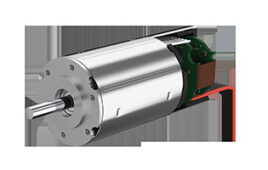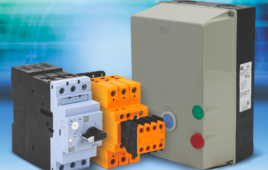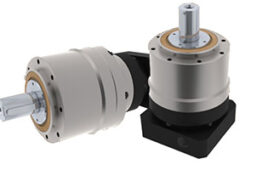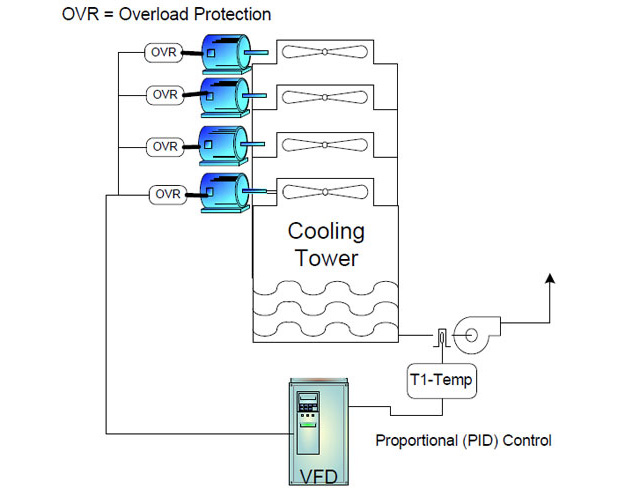By David Cline
David Cline is SynqNet® Design Engineer at Danaher Motion
To maintain a competitive edge over competition and outperform next-generation machines, OEMs must constantly find better ways to increase system uptime and productivity. It is a constant struggle that all project managers confront during each phase of product development. They must determine how to secure their machines to net the highest possible product yields. These challenges are traditionally fought at the hardware and software application levels; however, one of the best ways to dramatically increase system uptime is at the network level.
An ideal motion network would help identify potential problems before they occur, as well as provide a way to safely maintain normal operation despite a cable break, loose connection, or node failure to manage system uptime and reliability. SynqNet is a motion network of choice for many machine builders because of its fault tolerant “self-healing” and “hot replace” features.

Redundant cable link between Node 2 and Controller. A cable break between Node 0 and Node 1 causes data to be sent over a redundant link. All nodes receive data and process it synchronously, maintaining network communication.
No breaks in transmission
SynqNet can operate a system even after cable break, loose connection, or complete fault of any node on the network. The network ring topology includes a redundant data path to ensure data transmission through the entire ring. SynqNet uses this redundant path as a secondary data channel. If a wiring segment fails, the hardware re-routes the data path within two servo cycles, and the network connection remains available. At the same time, a signal is sent to the controller about the event and location, so that the machine can respond to the specific situation.
For example, a machine can be programmed to finish a move sequence that would otherwise cause a dangerous or expensive collision of independent or interlocked machine axes. Maintenance personnel can then replace bad cables or loose network connections at more convenient times. This is a valuable safety and cost savings feature for semiconductor machines that are handling materials such as silicon wafers. With SynqNet’s fault tolerance routine, OEMs can quickly recognize a problem, and machine designers can make shutdown routines that move wafers to a safe location.
A 48-axis machine in the semiconductor industry, running on a SynqNet network, recently performed a 1000 wafer qualification test for certification and commissioning in China.
During the test, a bad network cable connection caused insufficient communication to one of the drives, which automatically triggered the self-healing fault recovery routine. The network seamlessly rerouted data packets around the bad cable connection with no obvious negative effects to machine performance. Despite the faulty cable connection, the machine passed the qualification test.
Engineers were unaware of the bad cable connection until they checked the system’s log file. After reading the file, they determined exactly when the fault occurred, as well as the location of the faulty cable because of the synchronized timing clocks on the motion controller and nodes—another unique feature of SynqNet. The synchronized cyclic communication provides both complete system visibility and a way to time stamp any event on the network for easy identification of system faults, which helps streamline the troubleshooting process.
Hot replace increases uptime
With SynqNet’s HotReplace feature, one or more consecutive nodes can be shut down, serviced, and then reattached to the system without affecting the operation of the other nodes. This feature is useful for modular applications that require regular maintenance or replacement of network nodes.

SynqNet Ring Topology – Normal Operation.

Axes and I/O associated with Node 2 are taken off-line for regular maintenance. All other nodes remain fully operational.

Node 2 is reattached, reinitialized, and is ready to resume normal operation.
The network’s fault tolerant self-healing capabilities, as well its hot replace feature can keep systems up-and-running, as well as increase system reliability, throughput, and productivity. By reducing the risk of downtime, it may be the network of choice for many of today’s demanding motion applications.
Danaher Motion
www.DanaherMotion.com
SynqNet
www.SynqNet.org
: Design World :
Filed Under: CONNECTIVITY • fieldbuses • networks, Semiconductor manufacture, ENGINEERING SOFTWARE, Medical-device manufacture, Motion control • motor controls





Tell Us What You Think!